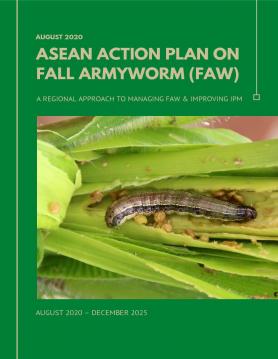You are here
ASEAN Action Plan on Fall Armyworm Control
The Fall Armyworm (Spodoptera frugiperda) was first reported in Southeast Asia in late 2018 in Thailand and Myanmar. It has since rapidly spread, and its presence is now confirmed in almost all ASEAN countries. The pest, which feeds on more than 350 plant species, can cause major damage, particularly to maize crops. Now it is endemic in the region, management will need to be focused on control rather than eradication. The impact of the Fall Armyworm’s presence in the ASEAN region will be considerable. Estimates using 10% crop damage across ASEAN maize crops indicates an annual US$884 million cost. Both in lost farmer income and as buyers are forced to import maize.
In 2019, ASEAN Ministers and senior officials responded to the threat that Fall Armyworm presents by supporting the development of a regionally coordinated response. In October 2019, the SOM-AMAF requested Grow Asia, in collaboration with ASEAN Secretariat to work with Viet Nam and the ASEAN Sectoral Working Group on Crops (ASWGC) to develop a regional FAW framework.
After an extensive six-month consultation process, the ASEAN Action Plan on Fall Armyworm presented here was developed. This Action Plan clearly sets out the goals, objectives, implementation structure and work programmes of a comprehensive Action Plan to support countries to respond to, monitor and manage Fall Armyworm across the region.
Copyright © 2020 Grow Asia Terms of UsePrivacy PolicyContact Us

